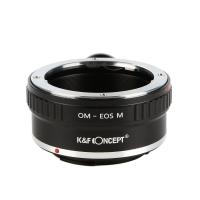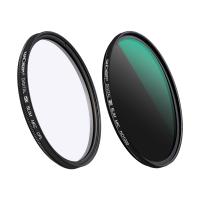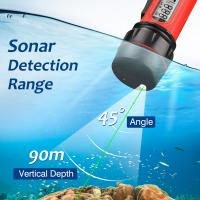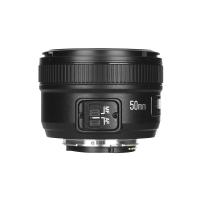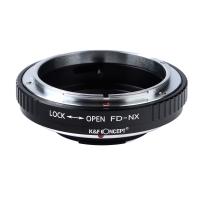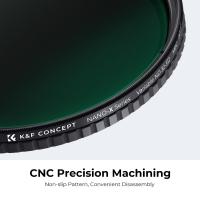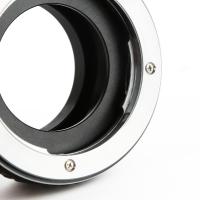Which Microscope Was Invented First ?
The first microscope was invented in the late 16th century, and it was a simple microscope. It consisted of a single convex lens that was used to magnify small objects. The compound microscope, which uses two or more lenses to magnify objects, was invented in the early 17th century.
1、 Simple microscope
The simple microscope, also known as the magnifying glass, was invented first. It is believed to have been invented in the early 13th century by Arab scientist Alhazen. The simple microscope consists of a single convex lens that magnifies the object being viewed. It was widely used by scientists and scholars during the Renaissance period to study small objects such as insects, plants, and minerals.
However, the invention of the compound microscope in the late 16th century revolutionized the field of microscopy. The compound microscope uses two or more lenses to magnify the object being viewed, allowing for much greater magnification and clarity. The first compound microscope was invented by Dutch scientist Zacharias Janssen in 1590.
Since then, there have been many advancements in microscopy technology, including the electron microscope, which uses a beam of electrons to magnify the object being viewed, and the scanning probe microscope, which uses a tiny probe to scan the surface of the object being viewed. These advancements have allowed scientists to study the structure and function of cells, molecules, and even atoms in unprecedented detail.
In conclusion, while the simple microscope was invented first, the compound microscope and subsequent advancements in microscopy technology have greatly expanded our understanding of the microscopic world.

2、 Compound microscope
The compound microscope was invented first. It was invented in the late 16th century by Dutch spectacle makers, Zacharias Janssen and his father Hans Janssen. The compound microscope uses two lenses to magnify an object, allowing for greater magnification than the simple microscope, which uses only one lens. The compound microscope revolutionized the field of microscopy and allowed scientists to observe and study microscopic organisms and structures in greater detail.
However, there is some debate over who exactly invented the compound microscope. Some historians credit the invention to the Italian scientist Galileo Galilei, who is said to have created a compound microscope in 1609. Others argue that Galileo's microscope was actually a simple microscope, and that the true inventor of the compound microscope was the Dutch scientist Cornelis Drebbel, who created a compound microscope in 1621.
Regardless of who invented the compound microscope, it is clear that this invention had a profound impact on the field of science. Today, compound microscopes are used in a wide range of scientific fields, from biology and medicine to materials science and nanotechnology. They continue to be an essential tool for scientists and researchers around the world.

3、 Electron microscope
Which microscope was invented first? The answer is the optical microscope, which was invented in the late 16th century. The optical microscope uses visible light to magnify objects and has been a crucial tool in scientific research for centuries. However, the electron microscope was not invented until the 1930s and uses a beam of electrons to magnify objects, allowing for much higher resolution images than the optical microscope.
While the optical microscope is still widely used today, the electron microscope has become an essential tool in many fields of science, including biology, materials science, and nanotechnology. The latest advancements in electron microscopy have allowed scientists to study the structure and behavior of materials and biological samples at the atomic and molecular level, providing unprecedented insights into the workings of the natural world.
In recent years, there has been a growing interest in developing new types of microscopes that combine the strengths of both optical and electron microscopy. These hybrid microscopes, such as the correlative light and electron microscopy (CLEM), allow scientists to study samples using both visible light and electrons, providing a more complete picture of the sample's structure and behavior.

4、 Scanning probe microscope
The scanning probe microscope was invented after the optical microscope, which was invented in the 17th century. The first scanning probe microscope was invented in 1981 by Gerd Binnig and Heinrich Rohrer at IBM Zurich Research Laboratory. This microscope allowed scientists to see and manipulate individual atoms and molecules, which was not possible with the optical microscope.
The scanning probe microscope works by scanning a tiny probe over the surface of a sample, measuring the interaction between the probe and the sample. This interaction can be used to create a three-dimensional image of the sample's surface with atomic resolution. The scanning probe microscope has revolutionized the field of nanotechnology, allowing scientists to study and manipulate materials at the atomic and molecular level.
While the scanning probe microscope was not the first microscope invented, it has had a significant impact on scientific research and technological advancements. In recent years, advancements in scanning probe microscopy have led to the development of new techniques such as atomic force microscopy and scanning tunneling microscopy, which have further expanded our ability to study and manipulate materials at the nanoscale.





















